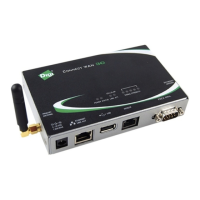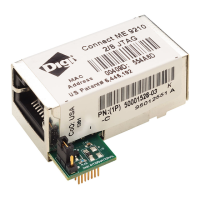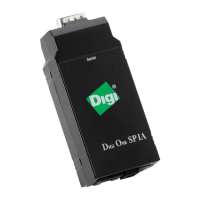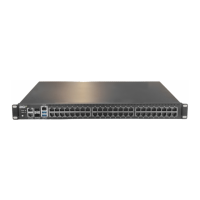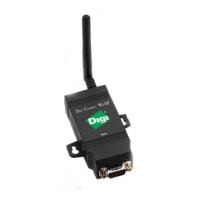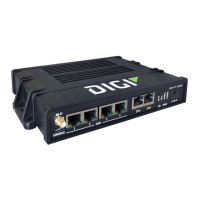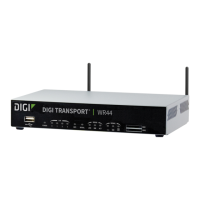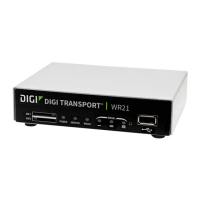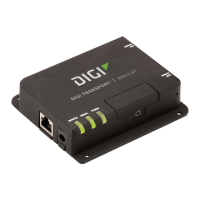Using the Digi Connect and ConnectPort TSFamily web interface Administration
Digi Connect Family and ConnectPort TSFamily
58
n
Serial Statistics: The Statistics section includesdata counters and error tracking that will help
determine the quality of data that isbeing sent or received. If the error countersare
accumulating, you may have a problem with your Digi device server.
l
Total Data In: Total number of data bytesreceived.
l
Total Data Out: Total number of data bytes transmitted.
l
Overrun Errors: Number of overrun errors—thenext data character arrived before the
hardware could move the previouscharacter.
l
Framing Errors: Number of framing errorsreceived—the received data did not havea valid
stop bit.
l
Parity Errors: Number of parity errors—the received data did not have the correct parity
setting.
l
Breaks: Number of break signals received.
GPIO
TheGPIOpane displaysthe current state of the General Purpose I/Opinson the Digi device. You can
change the state of pinsconfigured for output, as discussed in GPIOpins. Alarmscan be issued when
GPIOpinschange state, asdiscussed in AlarmsConfiguration.
Network statistics
Network pane provide details about network and protocol activity that may aid in troubleshooting
network communication problems. Statistics displayed are those gathered since the unit waslast
rebooted. If an error counter accumulatesat an unexpected rate for that type of counter, there may
be a problem in the Digi Connect and ConnectPort TSFamily product.
Ethernet Connection Statistics
n
Speed: Ethernet link speed: 10 or 100 Mbps. N/Aif link integrity isnot detected. For example,
the cable is disconnected.
n
Duplex: Ethernet link mode: half or full duplex. N/Aif link integrity isnot detected. For
example, the cable is disconnected.
n
BytesReceived/BytesSent: Number of bytes received or sent.
n
Unicast PacketsReceived: Number of unicast packetsreceived and delivered to a higher-
layer protocol. Aunicast packet isdirected to an Ethernet MACaddress.
n
Non-Unicast Packets Received: Number of non-unicast packetsreceived and delivered to a
higher-layer protocol. Anon-unicast packet isdirected to either an Ethernet broadcast address
or a multicast address.
n
Non-Unicast Packets Sent: Number of non-unicast packetsrequested to be sent by a higher-
layer protocol. Anon-unicast packet isdirected to either an Ethernet broadcast addressor a
multicast address.
n
Unknown Protocol Packets Received: Number of received packets discarded because of an
unknown or unsupported protocol.
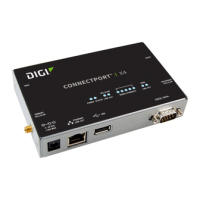
